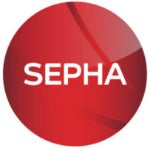Leading packaging machinery manufacturer Sepha has been challenging traditional thinking on leak-testing procedures through the roll-out of a global summer seminar and exhibition programme that demonstrated how its new leak-testing technology can increase competiveness and revolutionise current packaging test methods within the pharmaceutical industry.
Package integrity is key to product quality, and excellence in quality and efficiency standards is a major talking point within the pharma industry today. Sepha’s state-of-the-art, non-destructive leaking-testing machines provide a technical, cost-effective and objective blue-dye test alternative that does not compromise the product or the packaging.
“It is vital to ensure that a pharmaceutical product is fit for purpose at point of use. If compromised it can be become ineffective. The time-honoured and widely used, global method of leak-testing packaged product is the Methylene blue-dye test. It is a messy, destructive and subjective test that really does not befit the technical excellence associated with modern pharmaceutical manufacturing. The subjective nature of this test and variance in set-up across packaging lines can lead to validation issues. This results in needless destruction of good packs and an intensive reliance on the operator,” explains Sepha product manager, Phil Stevenson.
Sepha has developed fully validatable alternatives to the Methylene blue-dye test. For sachets and pouches PakScan is a machine that tests multiple packs using load cells to measure the force generated by the packaging under vacuum. PakScan machines are designed to isolate this force, measuring peak force and rate of change to establish presence of both large and small holes down to 10µm.
For blister packs, which require multiple load cells for a single pack constraining machine capacity, flexibility and ease of calibration, Sepha has developed Blisterscan which utilises a single laser to move across the blister pockets measuring their deflection and enhancing these changes by altering the pressure levels during testing. This system allows multiple packs to be tested in a single test making the blue-dye test methodology obsolete.
Along with the cost benefits BlisterScan and PakScan provide, they also produce useful batch data that can be used by manufacturers to monitor their performance and improve their line efficiencies.
“The real cost of running the blue-dye test is seen only when the cost of disposing the waste (financial and environmental) and lost production is considered. For example, one packaging line producing 14 tablet blisters running two 8hr shifts would waste $4,480 per day based on the tablets costing $1 each and ten packs being tested every half an hour. This cost is before disposal of tested product is even considered,” continues Phil Stevenson.
When analysing quality and efficiencies on the production line, manufacturers must weigh up the cost-benefits of leak testing. For up and coming pharmaceutical companies seeking regulatory approval, Sepha’s non-destructive leak-testing machines provide a means of proving quality standards whilst at the same time reducing costs.

